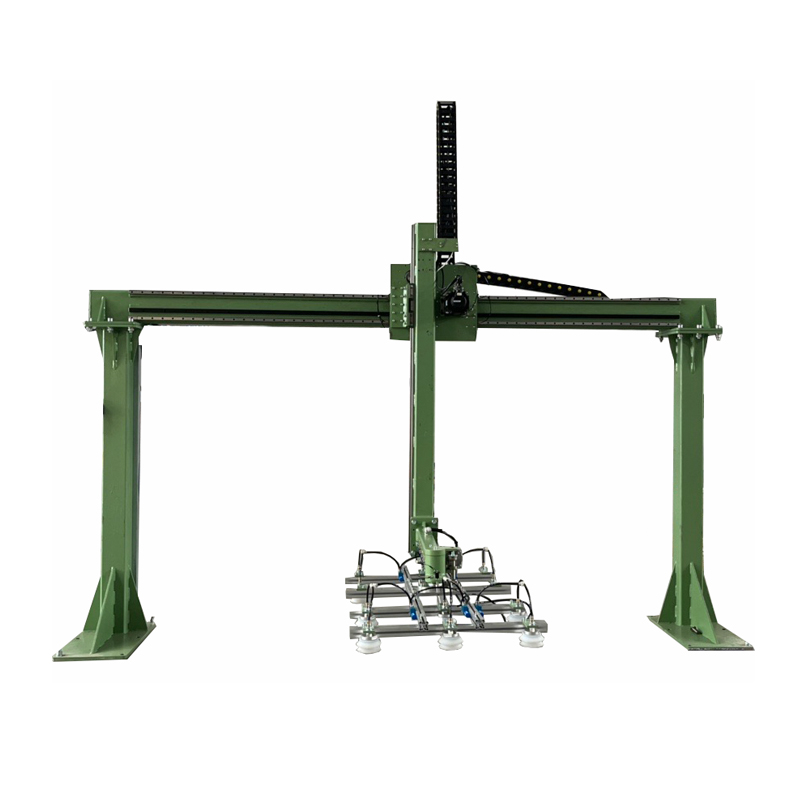Linear gantry robot, also often called gantry robot or gantry manipulator, is an industrial automation equipment that moves based on a rectangular coordinate system. It is characterized by its unique “gantry” frame structure and can perform material handling, processing, assembly and other operations in a large plane area.
Advantages of linear gantry robot
Linear gantry robot has significant advantages in specific applications due to its structural characteristics and movement mode:
Extremely large working range and load capacity:
Wide coverage area: The X and Y axis travel can be customized to be very long (up to tens of meters) according to needs, and can cover a much larger plane area than traditional multi-joint robots, which is very suitable for large workpieces or large-scale operation scenarios.
Strong load-bearing capacity: The gantry double support structure provides excellent rigidity and load-bearing capacity, and can stably handle and process very heavy and large workpieces.
High precision and high repeatability:
Linear guides and precision transmission systems (especially ball screws and linear motors) provide extremely high positioning accuracy and repeatability, which can meet tasks with extremely high processing and assembly precision requirements.
The structure is stable and not easily affected by external vibration, ensuring the smoothness and accuracy of the motion trajectory.
High speed and high efficiency:
Each axis can achieve fast acceleration and deceleration and high-speed motion, significantly shortening the production cycle.
Multiple independent execution units (multi-manipulators) can be installed on the same gantry frame to achieve parallel operation and further improve production efficiency and throughput.
High space utilization:
The gantry frame is usually erected above the production line or around the equipment, making full use of the three-dimensional space of the factory, avoiding occupying valuable ground area, and making the factory layout more compact and reasonable.
Relatively intuitive programming:
Based on the movement of the rectangular coordinate system, its motion trajectory is usually a straight line or a simple curve, and the programming logic is relatively simple and intuitive, easy to understand and operate.
Relatively simple maintenance:
The structural components are relatively standard, and the maintenance of linear motion components may be more direct than that of complex multi-joint robots.
Typical application scenarios
Linear gantry robots are widely used in the following industries and applications due to their unique advantages:
Automobile manufacturing: Stamping and unloading, welding, gluing, assembly of large body parts, handling and assembly of engines and gearboxes.
Metal processing: Automatic loading and unloading, sorting and stacking of large plates after laser cutting, plasma cutting, CNC stamping and bending.
Logistics warehousing: Automatic storage, handling and stacking of large materials (such as steel coils, plates and profiles) in automated warehouses.
New energy: Production, handling and testing of solar panels; assembly of large power battery modules.
Home appliance manufacturing: Handling and assembly of shells and inner tanks of large home appliances (such as refrigerators and washing machines).
Building materials industry: Handling and processing of large glass, stone and plates.
Aerospace: Precision processing, assembly and testing of large components.
Automated gluing, spraying and spot welding: Precise coating or welding of workpieces covering large areas.
